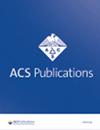Study of Temperature Effect on the Structure and Optical Properties of RIT- 62 Cu-MOFs
引用次数: 0
Abstract
Metal organic frameworks are the materials of today’s generation and are widely used for their various physicochemical properties. MOFs are synthesized by various methods such chemical precipitation method, solgel method, hydrothermal method etc. To attain the required optoelectronic properties of MOFs, synthetic methods play a important role. In the present work, the synthesis of Cu-MOFs was carried out at 80 °C and 120 °C. The synthesized Cu-MOFs were labeled as RIT 62-Cu-MOF-1 and RIT 62-Cu-MOF-2. Both the Cu-MOFs were characterized by FTIR, UV-visible spectra. The FESEM of both Cu-MOFs indicated that spherical particles with 120 to 200 nms. of particle size. Tauc’s method was employed to compute the band gap of both Cu-MOFs. RIT 62-Cu-MOF-1 imparted 2.67 eV while RIT 62-Cu-MOF-2 imparted average of 2.06 eV off bandgap. 2.35 eV due to ligand-metal charge transfer observed through UV-visible spectra. Further, optimization of synthetic procedures to enhance the optical properties of Cu-MOFs.温度对RIT- 62 Cu-MOFs结构和光学性质影响的研究
金属有机骨架是当今一代的材料,因其各种物理化学性质而被广泛使用。mof的合成方法有化学沉淀法、溶胶凝胶法、水热法等。为了获得mof所需的光电性能,合成方法起着重要的作用。在本工作中,Cu-MOFs的合成分别在80°C和120°C下进行。合成的cu - mof分别标记为RIT 62-Cu-MOF-1和RIT 62-Cu-MOF-2。用红外光谱和紫外可见光谱对两种Cu-MOFs进行了表征。两种cu - mof的FESEM均为120 ~ 200 nms的球形颗粒。颗粒大小的。采用Tauc方法计算了两种Cu-MOFs的带隙。RIT 62-Cu-MOF-1的平均增益为2.67 eV, RIT 62-Cu-MOF-2的平均增益为2.06 eV。通过紫外可见光谱观察到的配-金属电荷转移效应。进一步,优化合成工艺以提高Cu-MOFs的光学性能。
本文章由计算机程序翻译,如有差异,请以英文原文为准。
求助全文
约1分钟内获得全文
求助全文

 求助内容:
求助内容: 应助结果提醒方式:
应助结果提醒方式:


